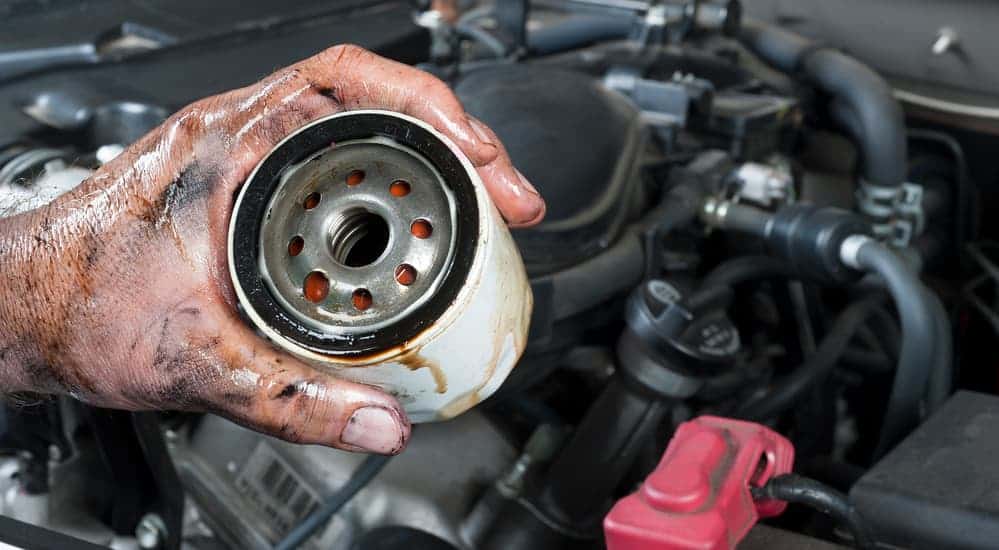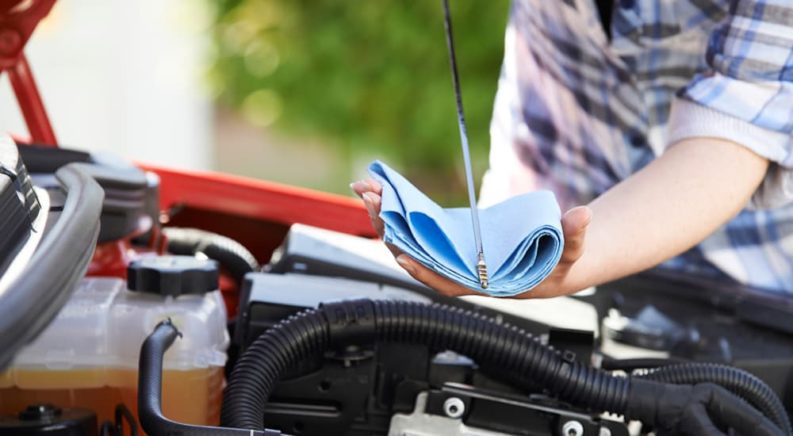Every single driver out there should be at least familiar with one of the major nuisances that come with owning a car: maintenance. Not only does one have to pay for their vehicle and insurance, but also for repairs when that vehicle inevitably breaks down. The most frequent form of maintenance that one will find is an oil change. Thankfully, with how frequently they are required, they are one of the simplest and cheapest forms of automobile maintenance. Nonetheless, they are still an obnoxious addition to the cost of vehicle ownership. Most people who have taken their vehicles to a mechanic for an oil change and stayed while their vehicle was being serviced have probably noticed that it does not take a very long time for a complete oil change. That is because it is essentially unscrewing a bolt, draining the old oil, replacing a filter, and pouring in the new oil. With a few simple steps and some materials, just about anyone can perform an oil change on their vehicle from the comfort of their home.
What Exactly Is Motor Oil?
Essentially, motor oil is a form of different substances comprised of base oil, along with certain additives. Its primary function is for the lubrication of internal combustion engines (ICE). ICE’s are very complex pieces of machinery, which contain many moving parts and gears. It is imperative that the friction between these parts and gears is maintained and kept as low as possible. Friction will wear down an ICE rapidly and this will cause the engine to break-down. On top of lubrication, motor oil has several additives in it that are beneficial to maintaining overall engine health. One of the major additives are dispersants. Dispersants help to keep sludge from forming (part of the reason the oil comes out darker in color). Most motor oil also contains additives which help prevent corrosion and oxidation, two conditions which will negatively impact an engine’s health. On top of all of that, the motor oil also helps maintain the engine’s heat, by carrying heat away from the moving parts/gears. There are many different kinds of motor oil available to the average consumer, with differing viscosities. However, each vehicle’s engine is designed for one singular viscosity, narrowing down the options considerably.
Why Does Motor Oil Have to Be Changed So Frequently?
It’s something that everyone has probably wondered to themselves at some point; “why do I have to change this car’s oil so frequently?” There is actually very valid reasoning for it, and that is that your engine simply would not operate without it. ICE’s contain many moving parts and gears that when grinding together, can create a ton of friction and heat build-up.
Not only does the motor oil to keep the parts and gears lubricated and running smoothly which prevents the build-up of heat, but it also is able to dissipate heat build-up by taking the heat and moving it away from the source. Over time, however, the engine oil begins to breakdown and become less-effective, to the point where it stops working as intended. It does not take very long for an ICE to overheat to critical levels without proper oil, which is precisely why performing timely oil changes is so critical. An engine replacement can be a very costly and timely repair, and properly maintaining your motor oil is one of the best things you can do to avoid having to replace your whole engine.
Things You Will Need to Get Started
As was stated before, with a few simple items and steps, anyone can change their own motor oil from home. Before one gets started, they need to gather a few different materials. The first one would be motor oil. One can find motor oil from an auto parts store or even some department stores such as Walmart. Most stores that sell motor oil will have some resource there for determining the viscosity that one will need, whether it be a book or a knowledgeable employee. This information can also be found on the internet. The only that would be necessary to know is the make, model, and year of the vehicle. One then needs to decide what grade of oil they want. Typically, standard grade motor oil should be changed after about 5,000 miles. There also exists synthetic oil which has an extended range of 10,000 miles; however, it is a bit pricier than a standard grade. Once one has the oil selected, they then need to get a new oil filter. Much like with the oil, each car requires a specific-sized oil filter, and this information can be usually found at a store that sells them or online. On top of the oil and filter, a drain bucket is also needed to collect the spent oil, a funnel to pour the new oil into the engine, as well as a wrench or ratchet to remove the drain plug.

Steps to Perform the Oil Change
Once all of the materials are gathered, the oil change can begin. It is important to remember to wear clothing that you would not mind getting dirty, as changing motor oil can be a messy process. To begin, you should maneuver your way under the vehicle with the drain bucket and the wrench/ratchet. On the bottom of the engine, you should find the oil pan, which will have a singular nut, or drain plug. You should then set the drain bucket under the drain plug, and a little bit outwards, as the stream of oil initially is strong coming out of the drain.
With the bucket in place, use the wrench/ratchet to loosen the drain plug to the point it can be spun off with your fingers. It is advised you quickly spin the drain plug off with your fingers while shielding your eyes, as the oil comes out fast and will push the drain plug out of the way. If you follow these initial steps you can eliminate the possibility of covering yourself in oil while trying to fully unscrew the plug with a tool. The oil will drain quickly, and then slow to a halt. Once it is done draining you can then remove the oil filter, although it advised to do so over the drain bucket, as the filter will contain residual oil which will pour out the sides. Once the filter is off, the drain plug can be replaced. Then, the new filter can be installed.
Now you should dip a finger into the new oil and apply a thin layer to the top of the oil filter. This makes it a little easier for installation, as it screws in much easier. The final step is simply taking using the funnel to pour in the new oil into the engine. It is important to figure out just how much oil your engine can take, as over-filling or under-filling can both be negative for your engine’s health. This can usually be found in the vehicle’s owner manual, but it can also be found on the internet. Once you know how much you need, simply unscrew the engine cap, place the funnel, and pour in the new motor oil. Once done, replace the engine cap, and voila! Oil change complete!
Oil changes are a frequent and necessary part of automobile maintenance. Making sure one does timely oil changes is a great way to ensure that one’s automobile engine is healthy and lasts. While they are imperative and frequent, they are not very costly to perform or overly-complicated. With a few materials, and the steps listed above, just about anyone can perform their own oil change directly from their own home. If this happens to sound like a lot of messy work or you want it done quick and easily, you always have the option to have your oil change done by a professional.

